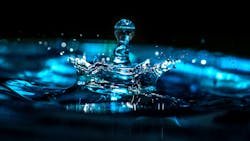How Water Can Make Or Break Coffee Service
“Coffee is a ballet of chemistry.” Those words were said by David Emmens, sales support and technical training manager at Pentair during the 2018 Coffee, Tea and Water event in New Orleans. Emmens and co-presenter Cortney Scharenberg, also of Pentair, shared with audience members the importance of water chemistry with regard to beverage taste and equipment performance. Water is the solvent for the chemical extraction of the coffee grounds, they explained. Coffee is 98 percent water. It is an essential part of office coffee service, but also a very difficult part to get right. “There is no one product to put everywhere,” said Scharenberg. “We are dealing with nature. It’s different here than five miles down the road.”
Water and equipment
Poor water can increase maintenance and shorten the life of coffee brewers, Emmens and Scharenberg said. For expensive espresso and bean-to-cup machines, this results in thousands of dollars in lost sales for down equipment as well as heavy repair and cleaning costs. In addition, the manufacturers of coffee brewers know how the water can affect metal and sophisticated equipment. “They won’t pay the warranty if the water going in doesn’t meet their requirements,” warned Scharenberg.
Even a quarter inch of scale, which is essentially rock formed when minerals that were suspended in the water fall out when the water is heated, will decrease efficiency of the heating element 25 percent, Scharenberg explained. The more scale, the harder the heating element needs to work, and eventually, the heating element will fail.
Corrosion is another issue that can lead to brewer failure and as it eats away at metal. Water with a low pH causes corrosion. The pH could be low from dissolved minerals from farm runoff or because there are almost no minerals in the water. Without minerals, the water will pull minerals out of the metal it touches, especially copper and brass.
Other elements in the water can affect equipment beyond minerals and pH. Sanitizers, such as chlorine and chloramine (chlorine and ammonia), can ruin equipment when the water is heated. They also affect the taste of coffee in a negative way.
The solution then is to know what makes up the water at each location and use an appropriate filter to remove what isn’t desired. However, this has to be balanced with coffee flavor if the operator wants to deliver a great tasting beverage.
Water and flavor
“The Specialty Coffee Association (SCA) has lots of research on minerals in water that make a great cup of coffee,” said Scharenberg.
While operators can’t control the water that comes into the building, they can control how it enters the brewer as well as the coffee itself, volume used, grind size,” said Emmens. The SCA has set standards for the perfect cup of coffee:
0 mg/L Chlorine
150 mg/L TDS3
68 mg/L Calcium hardness
40 mg/L Total alkalinity
7.0 pH
10 mg/L Sodium
“One thing that makes an awful cup of coffee is high sodium, so don’t put a water softener in with your coffee equipment,” said Emmens.
Water solutions
Decisions need to be made on how to balance the treatment of water for the best value. First, every machine needs a carbon filter to remove water sanitizers that can ruin equipment and the taste of coffee, Emmens and Scharnberg said. Operators need to know whether the municipality is using chlorine or chloramine as a water sanitizer so they can use the proper carbon filter to provide the best coffee.
“To make great coffee, you need mineral present, but if you don’t manage it properly, you will get scale buildup,” said Scharenberg. For scale reduction there are solutions, such as polyphosphates, saltless water softening and reverse osmosis.
Polyphosphates are a post filter treatment that makes a powder or mushy scale, rather than let it form into rock. The scale falls to the bottom as the water passes through and becomes much easier to clean.
Saltless softening uses hydrogen, a weak acid, to remove minerals from the water instead of salt. This drops the pH of the water to a point where scale can’t form. If misapplied, the water can be too acidic and cause corrosion however.
Reverse osmosis, forcing water through a membrane, does remove minerals. Therefore, it won’t provide the best tasting water. However, with a new blended type technology available, that problem can be rectified. One issue reverse osmosis won’t fix is corrosive water. If the water has a low pH going into the reverse osmosis system, it will emerge with a low pH and be corrosive to metals.
As both the solvent for coffee extraction and bulk of what ends up in the user’s cup, water is extremely important. There is no one-size-fits all solution, nor is there a perfect solution to protect equipment and taste. Instead, operators need to weigh carefully their local water sources, filtration options, investment in equipment, etc. It’s a dance, but one that can elevate an OCS business.
About the Author

Emily Refermat
Emily Refermat began covering the vending industry in 2006 and served as editor of Automatic Merchandiser from 2012 to 2019. To reach the current editor of Automatic Merchandiser and VendingMarketWatch.com, email [email protected].
